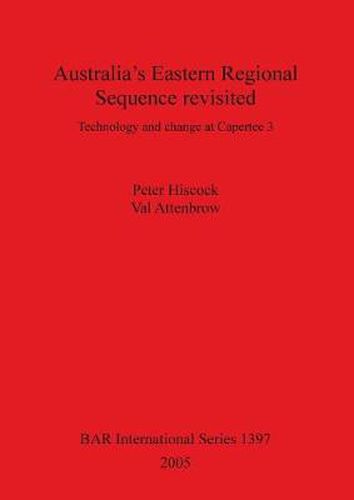Readings Newsletter
Become a Readings Member to make your shopping experience even easier.
Sign in or sign up for free!
You’re not far away from qualifying for FREE standard shipping within Australia
You’ve qualified for FREE standard shipping within Australia
The cart is loading…






This title is printed to order. This book may have been self-published. If so, we cannot guarantee the quality of the content. In the main most books will have gone through the editing process however some may not. We therefore suggest that you be aware of this before ordering this book. If in doubt check either the author or publisher’s details as we are unable to accept any returns unless they are faulty. Please contact us if you have any questions.
This monograph represents a new step in Australian archaeology. It presents a detailed quantitative, technological analysis of flaked stone artefacts, of a kind not published previously in Australia. The detailed nature of the analysis reflects the measurement of a large number of variables on each specimen, as well as the use of those measurements in an extended study of the archaeological patterns. The monograph deals with only one archaeological assemblage: the stone artefacts from Capertee 3, a site excavated in the Blue Mountains immediately west of Sydney. This volume develops and tests models of artefact variation and production to an extent not seen before in Australia. More importantly, the analysis of data involves the statistical interrogation of quantitative measurements and is designed to reveal the magnitude and direction of morphological variation within the assemblage. The technological approach adopted allows for the first time in Australian archaeology an evaluation of the nature of changes in the manufacture of retouched flakes in a sequence spanning the entire Holocene. This evaluation enhances current understanding of cultural change in Holocene eastern Australia by allowing the testing of a number of propositions about the rate and uniformity of change in archaeological assemblages. In particular these analyses initiate a review of models of the Eastern Regional Sequence by creating a record of the stoneworking processes in one of the key archaeological sites that define the purported Eastern Regional Sequence.
$9.00 standard shipping within Australia
FREE standard shipping within Australia for orders over $100.00
Express & International shipping calculated at checkout
This title is printed to order. This book may have been self-published. If so, we cannot guarantee the quality of the content. In the main most books will have gone through the editing process however some may not. We therefore suggest that you be aware of this before ordering this book. If in doubt check either the author or publisher’s details as we are unable to accept any returns unless they are faulty. Please contact us if you have any questions.
This monograph represents a new step in Australian archaeology. It presents a detailed quantitative, technological analysis of flaked stone artefacts, of a kind not published previously in Australia. The detailed nature of the analysis reflects the measurement of a large number of variables on each specimen, as well as the use of those measurements in an extended study of the archaeological patterns. The monograph deals with only one archaeological assemblage: the stone artefacts from Capertee 3, a site excavated in the Blue Mountains immediately west of Sydney. This volume develops and tests models of artefact variation and production to an extent not seen before in Australia. More importantly, the analysis of data involves the statistical interrogation of quantitative measurements and is designed to reveal the magnitude and direction of morphological variation within the assemblage. The technological approach adopted allows for the first time in Australian archaeology an evaluation of the nature of changes in the manufacture of retouched flakes in a sequence spanning the entire Holocene. This evaluation enhances current understanding of cultural change in Holocene eastern Australia by allowing the testing of a number of propositions about the rate and uniformity of change in archaeological assemblages. In particular these analyses initiate a review of models of the Eastern Regional Sequence by creating a record of the stoneworking processes in one of the key archaeological sites that define the purported Eastern Regional Sequence.